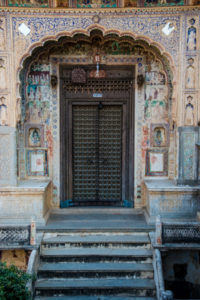 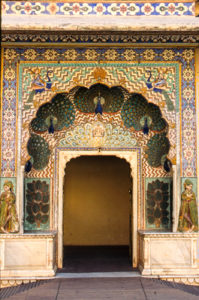 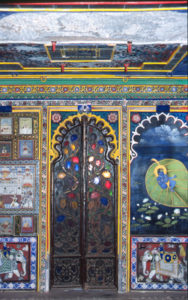 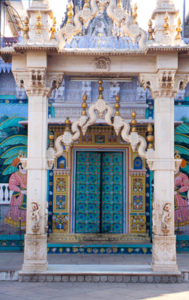 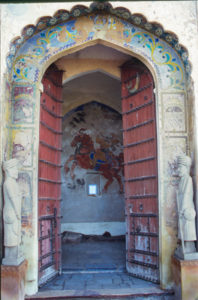 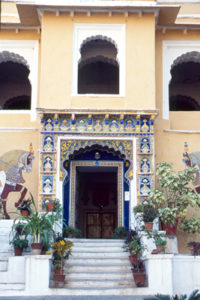  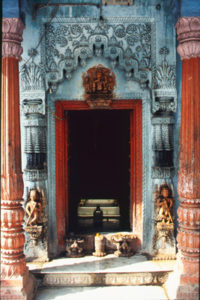 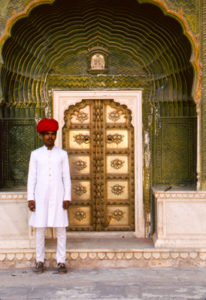 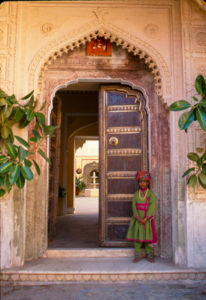 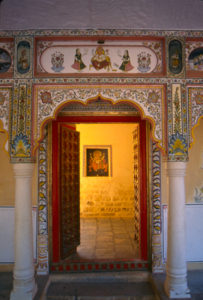 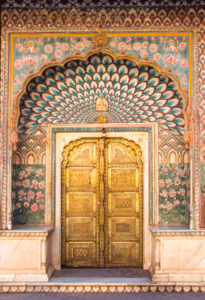  |
India really, really is my favorite place, but just so that you are going fully informed… The World Health Organization has designated Delhi as the most polluted mega-city in the world, and has ranked it as number 14th most polluted city in the overall list of 3000 cities. Twenty two Indian cities make this list, including Gwalior – the 2nd most polluted, along with Allahabad, and Patna (L.A. Times, 13 May 2016) The World Health Organization reports ( in 2015) that 137,572 people in India died in traffic related accidents. This includes pedestrians as well as people riding in automobiles and busses. The most dangerous state is Tamil Nadu. This works out to 16.6 people per 100,000 inhabitants. Just for comparison, here are some other countries: United Kingdom: 2.9 per 100,000, USA: 10.6 per 100,000. Many car deaths in India are caused because Indians seldom wear seatbelts, so this can be mitigated a bit by careful travelers, but there is no getting around the fact that driving in India is astonishingly hair raising. In my 35 trips to India, I have been in one serious accident when a (drunk) man on a motorcycle ran into my car and was killed. This was on an almost deserted road in Rajasthan. I have also been in 5 or 6 fender benders. The Indian subcontinent’s subduction under the Asian plate is one of the most active earthquake faults in the world. Earthquakes all along the Himalayan foothills are commonplace, but one of the deadliest in recent history was in Bhuj, Gujarat. After that quake, I read somewhere – but don’t remember where – that seismologists were very concerned about the fault that runs between Shimla and Dehra Dun. Then, of course, there was the 2015 Nepal quake that some seismologists believe increased the pressure under Darjeeling and Sikkim. All this compounded by the fact that building codes are non-existent or completely ignored. I have seen concrete pillars with only 2 pieces of rebar in them holding up 5 story buildings. Book your hotels accordingly. Rabies, dengue fever, chickingunya and malaria are all problems there. Move down for my “health concerns” page. A little advance preparation ….. Visas This is the situation at the beginning of 2017, but it can change on a whim! Check everything out just before you go! The latest little scare is that citizens of Britain need to have their fingerprints registered at the Indian embassy or a consulate in their home country before they go. Will they continue with this charade? Will it spread to citizens of other countries? Yes, you will need a visa unless you are a citizen of Bhutan or Nepal. I haven’t had to do this yet as my 10 year visa has just now expired, but I have heard nothing but complaints from everyone who has done it. Leave plenty of time – one woman reported that it took her 6 hours to fill out the form for the regular, double entry visa. The good news is that for many of us, some times, little easier now. Citizens of 150 countries – including the EU, GB, Canada, USA, New Zealand, and Australia can apply for a visa on line – called an e-Tourist Visa or eTV. This is assuming that you are a regular tourist, are staying less than 30 days, are flying into one the appointed airports (which is most of them), and need only a single entry visa – in other words – you aren’t going to Nepal, Bhutan, etc and then returning to India. Go to the government of India website at https://indianvisaonline.gov.in/visa/index.html This process involves filling out an on line application and submitting it, along with a scanned copy of your passport and a photo and credit card ++. You will receive a confirmation which you will then present to the immigration official upon arrival in India. This can be done no more than 33 days before your arrival and no less than 5 days. Or, what I’m going to do next time is use a company called iVisa www.ivisa.com DISCLAIMER ALERT! I don’t know anything about them yet, but I’ll keep you posted They charge US$ 35 on top of the visa fee, but will keep an eye on things for you and help you out. If you need a double entry visa, are staying longer than a month, are arriving on a cruise ship, or need something other than a tourist visa, you must apply for the standard visa. India has appointed Cox and Kings as their agent, so if you are in the USA, go directly to their website at https://www.in.ckgs.us/visa/ (google Cox and Kings Indian visa for other countries) Carefully read the “How to Apply” section. Be sure your passport is valid for 6 months after your trip. Permits and Protected AreasIndia has 2 types of permits that are required for some sensitive areas. Protected Area Permits (PAP) and Restricted Area Permits (RAP) Be very careful to list all the cities which you will be visiting on your visa application form so that the consulate can alert you if a permit is required. In almost every case, if you are going into one of the areas which require that you be in a group, your tour operator in India will handle the permits for the group. I’m sure there are more, but these are the ones I’ve come up against: Check with your local tour operator! These requirements change constantly and they will have the latest information! Sikkim – Individual tourists are allowed, with a PAP – Protected Area Permit, for 15 days into the “normal” tourist areas of Gangtok, Rumtek, Peamayangtse, Phodong, and Tashiding. This permit is a simple, free addendum stamped on to your visa, or it can be obtained on the spot at the Bagdogra airport or in 2 days in Darjeeling. You must be a member of an organized group and have a RAP – Restricted Area Permit – to visit Zongri in West Sikkim, East Sikkim, Yumthang, and Lachung. In Arunachal Pradesh – Itanagar, Ziro, Pasighat, Miao, Namdapha, Puki, and Bhalukpong. In Himachal Pradesh – You must be in a group and have a permit to visit Tabo Gompa, Kaza, Morang, and Dabling. In Jammu and Kashmir – Individual tourists with permits are allowed into the Nyoma Subdivision of Ladakh and the surrounding areas. You must be in a group and have a RAP for the Nubra Valley and the Khaltse Subdivision. In Mizoram – You must be in a group and have a permit to visit Vairangte, Thingdwal, and Aizawl. In Uttar Pradesh – You must be a member of a group and have a permit to visit the Nanda Devi Sanctuary and the areas around the Milam Glacier. Andaman and Nicobar Islands – Individual tourists with PAPs are allowed into Port Blair Municipal Area, Havelock Island, Long, Neil Island, Jolly Buoy, North and South Cinque, Red Srin, Mayabunder, Diglipur, Rangati, Mt. Harriet, and Madhuban. In Manipur – You must have a permit to visit Loktak Lake, Imphal, Mourang INA Memorial, Keibul Deer Sanctuary, and Waithe Lake. In Rajasthan – Most of the areas close to the Pakistani border will require either a PAP or RAP. In Karnataka – The Buddhist monasteries of Bylakuppe, Mundgod, and Hunsur require PAPs. In Odishia, all bets are off for the tribal areas. It’s very difficult to get any permits. Check with your tour operator. Check to be sure that your passport is valid for at least 6 months from the end of your trip and that your visa is in order. If you are coming from Africa or South America, most likely you will need proof of a yellow fever vaccine. Check the CDC website as well as the Gov’t of India site to see which countries they consider to have yellow fever. Hopefully, the situation has changed, but years ago a friend spent her “quarantine period” in the women’s jail. You don’t want to go there! The U.S. State department keeps up to date traveler’s advisories which can be accessed at https://travel.state.gov/content/passports/en/country/india.html There are also advisories posted from Australia at: http://smartraveller.gov.au/Countries/asia/south/Pages/india.aspx At the moment, travel to Kashmir is – once again- off limits. Travel Insurance Yes, definitely, in my opinion, a very good idea. But, holy smokes!, insurance is a mine field. It pays to stay up nights worrying about this stuff! I always travel with medical and evacuation insurance. I’m usually traveling on my own, so default and tour operator bankruptcy insurance is not applicable, except to cover my airline tickets. Besides medevac by air-ambulance, my insurance usually has some emergency assistance included in the form of legal assistance and cash transfers. And always, baggage insurance. I am convinced that there is a sign on my forehead that says “Please lose my luggage”. Besides the usual stuff you look for in a trip insurance policy, here are some of the issues I have run across that you may want to be insured for: Many times, especially in the early morning fog season of Dec, Jan, Feb, my flight into and out of Delhi has been delayed by about 12 hours. Many times, my luggage has been lost. If it lands up in an Indian airport without you, it’s very hard to locate ever, ever again. It ends up in a massively huge ware house and no one cares enough (except possibly the owner) to go climbing over stacks of suitcases to find it. (it did take several hours, but I did find it!) Are the contents of your luggage insured? Valuables and camera equipment may need a special rider. By the way – nobody is ever going to reimburse you for stolen contents unless you declare it before you leave the baggage claim area. When considering medical insurance, first of all, check with your policy at home. Will it cover medical issues while traveling overseas? Most of them do not and you will have to purchase specific travel insurance. Really, really, read the fine print. Think about every possible scenario. Will they pay for a hospital stay in India and what kind of medical services? Remember that if you ever have to submit a claim, you need to be awash in documentation papers. The insurance companies scour through all your old medical records, as well as the ones pertaining to the issue at hand. They are very thorough! Be sure you know exactly what is covered. Once, I had to accompany a traveling companion when she was evacuated by air to Singapore for dengue fever. Thankfully, she had insurance to cover. Take a look at your proposed policy. At what point will they pay for your evacuation? Is it all the way back to your home country, or to the nearest good hospital? In most cases this means to Singapore or Bangkok. Is it in an air ambulance or by scheduled carrier? What if you get injured just enough to ruin the trip but don’t need a medical evacuation? First of all, will the cover the balance of the trip and secondly, will they upgrade you to first or business if you need extra room to manage a flight? If you take out cancellation insurance, dream up every possible reason you could have to cancel. Just off the top of my head, here are some I’ve seen the last couple of years – What if your airport is closed on your day of departure because someone decided to play with guns in the departure lounge? How do they define “acts of terrorism”? What if you cause an injury car accident and cannot leave? If one of those pesky Icelandic volcanoes goes off again? What if you become pregnant and decide the risk of Zika is not worth it? I was three days late to India for a trip during the first Gulf war when Lufthansa pressed all their planes into service evacuating civilians (covered – “act of war”). I had to cancel a trip one time when my boss had a heart attack (not covered, but his company insurance reimbursed me) Many insurance companies will cover your pre-existing conditions if you take out their insurance within 7 days of making the deposit. Good idea – you will not believe what they can decide is a pre-existing condition! One of the most important things about cancellation and default insurance to be sure the insurance company knows and understands who your tour Read the fine print and play little mind games! There’s a website called Square Mouth that can help negotiate the prices of different insurance policies, you will need to ask some pretty savvy questions to figure out which is the right one. www.squaremouth.com There is one insurance company which is getting some press lately called World Nomads. I have never heard anything about them directly – other than they have a 70 year age limit – , but they are recommended on a blog called hippie-in-heels. Square Mouth does not include them, so you may want to check. There are a few advance precautions that can be taken just in case your documents are lost while you are travelling. In a separate place, keep a photocopy of the first page of your passport along with 2 forms of I.D. (driver’s license and a credit card will work), and 4 passport photos. Yes, for some reason, it seems to take 4 photos to replace a passport while overseas, although it does only take 2 in the U.S. In addition, it’s a good idea to have a copy of your Indian visa. If you are absolutely sure that your e-mail cannot be hacked, you can e-mail photocopies of these to yourself. Money can be exchanged at the baggage claim area in the Delhi airport upon your arrival. As with most places in India, there is little or no fee, although at this airport exchange counter a 100 rupee shortchanging seems to be de rigueur. Almost all of the four and five star hotels are authorized to exchange money for their guests, but if you are in a smaller hotel, you will have to find other arrangements. Ripped or badly mutilated Rupee bills are not accepted as legal tender anywhere in India so check your bills carefully. Unscrupulous shopkeepers will try to unload them on you. The huge holes left by the staples are OK, but if you get stuck with anything else will have to be exchanged at a State Bank of India office. You will be given an “Encashment Certificate” which you will need as proof of exchange should you need to re-convert your rupees back to dollars or Euros, or pay for certain hotel rooms in cash. India still has entered into the automated teller cash machine age with a bit of trepidation, and outside of the main cities, places to get money are few and far between. In Delhi, Calcutta, Mumbai, and Madras, you will be able to use cards with the “Plus” or “Star” symbol at Citibank, ANZ Grindlays Bank, State bank of India, or Standard Charter Bank. Outside of the main cities, however using an ATM card can be tricky. The best place to change money is any State Bank of India office or any of the government authorized exchange counters that seem to have popped up everywhere. You would be well advised, however, not to be in a hurry. The State Bank of India offices are normally open weekdays from 10AM to 4PM and the same hours on alternate Saturdays. This changes! Check with the front desk of your hotel. Take several credit cards with you, as well as back up Euros or Dollars. On my trip to Rajasthan in 2015, both my primary Visa card and my ATM card were shut down – in the middle of my trip! – due to fraudulent activity. All this, within a week of landing up in India. Hmmm… Go prepared. The electrical current in India is 240AC. (sort of) The usual plug is the old British 5 volt plug with 3 round pins set in a triangle shape** India also uses the old British 12 volt plug (now commonly called the South Africa plug) but it’s for air conditioners and refrigerators – not for the small appliances you will have. Power outages and power surges are fairly common throughout India, especially during the hot months. Very good idea to travel with a 240 watt rated surge protector. Most big hotels, businesses and restaurants have generators, but you will probably want to have a good little flashlight very handy. By the way, I’ve been really happy with my hands free headlamp instead of a flashlight. Mobile phones. If you’re European, you’re lucky, if you’re American, this can be a quagmire. The 2 biggest phone companies in India are Airtel and Vodafone, so make sure your American carrier piggy backs on to one of these. West Bengal uses BSNL, but it problematic outside of West Bengal. Last time I took my Verizon phone to India they were using Reliance. My Indian friends just laughed. And lent me a phone. T-Mobile seems to promise the best solutions, but I haven’t been to India since I switched. You can buy a phone in India and get an Indian SIM card. ( or get a SIM card for your unlocked phone) This makes calls within India as we as back home ridiculously inexpensive. However, depending on the fear level of the Indian Government at the moment, this can be complicated. In the 1998 attacks in Mumbai, the attackers used cell phones that they had purchased in India so the background checks and hoops you have to jump through can be daunting. Copies of your passport and driver’s license, letters from your hotel and at least 2 Indians who can vouch for you, and several days. Tipping A good starting point is US$5 per person per day for your driver, and US$10 per person per day for your guide. I don’t usually have a guide, my driver does double duty. so I give $10 pppd and maybe more because they really go out of their way to make my trip great. Bear in mind that local guides and drivers are paid almost nothing by the booking agency. They are pretty much dependant on tips. On the plains – in the main tourist areas, their tips bring in a decent standard of living. In the less touristy areas – up in the mountains, for instance – travelers and tips are scarce and I make an effort to come up with some extra. I have seen a couple of instances where a guide in Rajasthan – so you know they’re doing OK – has been so persuasive in pleading poverty that some tourist has ended up paying for his kid’s college or a new room for their house. Beware! Taxi drivers don’t expect to be tipped (believe me, they’ve added in plenty of extra because you’re a foreigner.) Waiters in small restaurants will be thrilled with some spare change, maybe up to 10% Waiters in western style restaurants in big hotels expect western style tips. This is over and above the huge luxury tax you will be paying to eat in a posh restaurant. Porters in train stations are merciless. No matter what you give them, they will wail and berate you for more. See more under my “Taking the Trains” in the planning page. |
